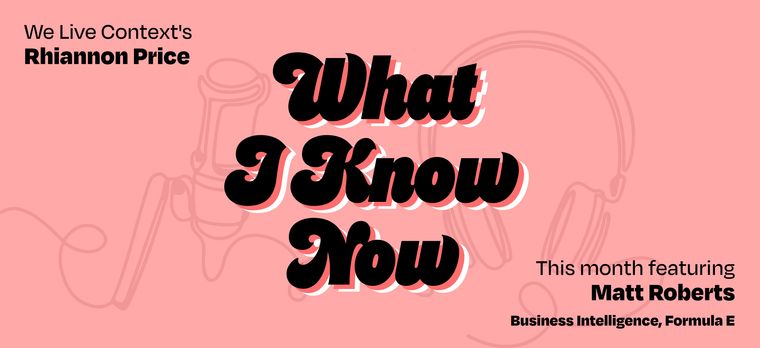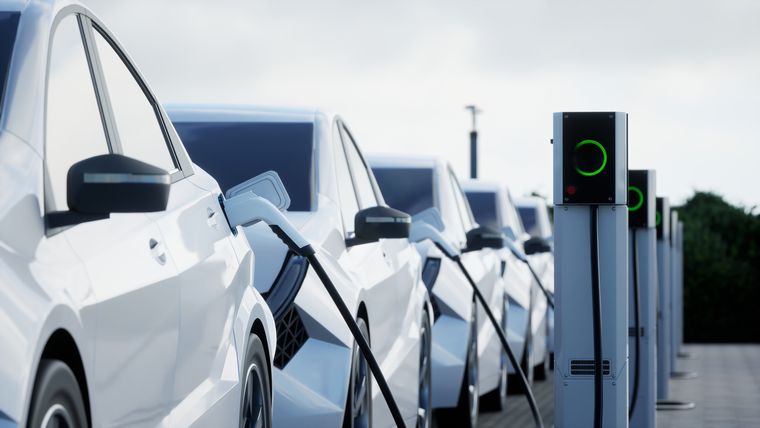Automotive “Deep Dive”
How the insights profession is evolving in the automotive vertical.

Since 2021, Insight250 award winners have been featured in this Insight250 article series for ResearchWorld, on a spectrum of topics covering technology advancements, methodology evolution, storytelling, leadership, data science, collaboration, and much more. Given the wealth of expertise across an array of industries within the Insight250 winners’ circle, it seems only fitting to periodically feature experts who can provide unique perspectives and deep dives into how insights are driving innovation in specific industries.
In this article I’ve featured the automotive industry. I am grateful to the four Insight250 winners, and automotive insights experts, who recently sat down with me from China, the United States, and Japan to give a global perspective on how the insights profession is evolving in the automotive vertical.
Their expertise gives an unrivalled window into what we can expect to see. So a big thank you to Shirley Ng, Research Principal, Asia Pacific, Europe, and Russia for General Motors, Keiji Tamagawa, Chief Inspector for Toyota Motor Corporation, Alexander Edwards, President & Partner of Strategic Vision, and Trevor Van Sandt, Senior Manager Advertising Research for Nissan Motor Corporation.
The automotive industry is going through an incredible paradigm shift as the market moves towards electric vehicles. This feature explores the challenges and opportunities this poses for insights professionals. It’s an incredible discussion about the advancement and innovation of the automotive industry and how the role of market research and consumer data is evolving.
Is the role of insights in the automotive industry changing, or has the role of the insights professional remained static?
“The role of insights has not changed at all, quite the opposite. Providing insights to support quantitative feedback is becoming even more important as the auto industry transitions from traditional fuel to pure electric vehicles. This transition is hard for manufacturers because of a government-imposed timeline globally. Auto manufacturers either face this industrial shift boldly, or they risk being unable to sell cars in mid-future, literally.”
Shirley Ng
“In the simplest view, the role of insights in the automotive industry has remained static as the essential questions still remain, "How do we sell more vehicles?" and "How do we increase profitability?" while at the same time addressing the necessity to "Bring in new customers" and "Keep the current customers loyal.
“Of course, these questions move to more specific questions depending on what goals the OEM, agency, or supplier has. Automotive advertising agencies, for example, may have questions about "What markets should we focus our communication in?" or "What messages will be most effective to get a customer into a dealership for a test drive?" However, these questions still fall into the essential issues addressed above.
“That being said, sometimes executives and/or researchers allow their personal hubris to influence their decision. This is where they change the role of insights to match their own game.”
Alexander Edwards
“I think the role of insights in the automotive still remains important but is going to change because the automotive business is now linked to the “non” automotive area (automotive will be the key to new society structures). So insights will be getting more and more inevitable to consider future business strategy."
Keiji Tamagawa
“I would say the role is not static. While some of the tools we use remain the same such as surveys, focus groups, and syndicated research; other faster tools are now being incorporated to speed up research; especially to get information at the beginning of a campaign or product launch. This will include social media posts, chat room conversations, third-party reviews, and influencer posts. Also, as more information is posted online, it makes it easier for our internal clients to also have access to information without it being provided by the research team. This is a double-edged sword. We like that it enables the client to find some information on their own, but we can’t always validate the source, and we have seen this information sometimes conflict with our more credible sources or our own first-party research. This creates a new challenge of explaining why the discrepancy is seen.”
Trevor Van Sandt
Do you find it easier or harder to get the voice of the consumer heard?
“We find it easier to listen to the voice of the consumer as consumers today wish to share their experiences even more than before. They want to be heard, and if they are given respect in regard to their time, they will answer.
“However, the hubris mentioned previously is more and more getting in the way of getting the voice of the consumer heard by those who make the decisions.”
Alexander Edwards
We can get the voice of the customer easier than before due to the utilization of SNS/online (faster, cheaper, and with increased sample sizes, etc.). But I feel getting the essential insights through the customer has become more difficult. The reason why is that we have to examine which information is correct and useful for the business. In other words, insight skills and expertise is becoming increasingly important."
Keiji Tamagawa
“It’s probably about the same but largely depends on the executive in charge and attitudes/culture towards the desire for hearing the voice of the customer from a market researcher. Insights from focus groups or customer feedback from a survey – especially when a few great customer quotes can be found are always valuable.”
Trevor Van Sandt
No, I don’t feel it is harder for leaders in the company to hear customers' voices. Actually, they are getting more anxious to receive high-quality learning from car buyers. Leaders’ decisions are definitely based on good sets of data, preferably data with emotions (qualitative support). It is understanding the data with emotions that is becoming even more important to decision makers in the company.
Shirley Ng
Where do your greatest insights come from?
“I would not say there is one source, but the greatest insights come from knowing how to use multiple sources to tell the story. In automotive, we have the luxury of many data sources, and the challenge becomes finding common themes and insights from all of the sources. We often start with third-party data and start digging.
“I tell my team in many ways, we are detectives. When we find a clue in some data that looks like there is more under the surface, we dig, slice and dice the data, and peel back the onion. Once that’s done, if we don’t have the full answer or the “why”, then we may do our own survey, hold focus groups, or see if we can find some online chatter to answer our question. So, there isn’t a silver bullet source, but instead, we need to know how to use all of our tools to answer the unique question we are trying to answer.”
Trevor Van Sandt
There are several points. One is through long-period research activities (conducting time series analysis through several countries with qualitative surveys such as FGI/clinics etc). The next one is the debate and free discussion among the members inside our company or from outside sources. And the final one (this would be most important, I think) is seeing/feeling the “real market/customers” by visiting the customers/spots and interviewing directly, etc.
Keiji Tamagawa
The greatest insights come from customers who use your products. Learn to respect their feedback, evaluate what they are trying to tell you, and pinpoint where the barriers are before you can even attempt to overcome the issues. A good example is the equity of your brand in customers’ eyes. Looking through their lens will help you a lot.
Shirley Ng
“Directly from the customer. If the right questions are asked in a way that allows the consumer to tell their story in their own natural language, the truth can easily be discovered. From there, insights and strategies are assembled.”
Alexander Edwards
Can you tell me about the importance of third-party data in the automotive industry and in your role specifically?
Third-party data is very important. As OEMs transition to a new paradigm, each is trying to find firm footing in a new landscape, while efficient budget management is key for survival. We cannot keep spending money even if it is for a good cause, such as conducting more primary research. A high-quality syndicated paper can provide a range of learning that we could not pursue independently on our own without having to spend a ton of money.
Shirley Ng
“Normally, we at Strategic Vision do not use third-party data. While there can be much to learn about consumers from such data, there are often significant internal and external (CCPA, GDPR) privacy rules that often are a barrier to such data appending.
“However, we also look at this as a positive as we believe in keeping the consumer story pure and usually only include the structured information that they provide.
“All of this, of course, is more of a guideline than a rule. Being able to append data like MSRP, the number of cylinders on the vehicle, etc. to a vehicle purchase, for example, can help data analysts as it can be difficult for consumers to remember these types of things with exactness.”
Alexander Edwards
In general, third-party data is important for gathering various points of view. Especially for considering the new categories of business, such as autonomous driving, for example. But on the other hand, I make it a rule to check the contents more carefully because the values and benefits of the data would depend on whether the publishers has clear knowledge and understandings about the market and customers.
Keiji Tamagawa
“Third-party data is extremely important. Many of the “simple” questions can be answered with a simple Mtab pull. Without this, all projects would require primary research. Third-party data is also the best way to get access to competitor data.”
Trevor Van Sandt
Are different sources used in terms of benchmarking, innovation, and strategy? Which sources do you find most useful?
As for the benchmarking with competitors, we use static data, press releases, and open sources. In addition, we, of course, use quantitative and qualitative survey results for evaluating competitiveness. On my team, the most useful information for benchmarking is quantitative survey results that we conduct annually because we have included our original viewpoints
in our questionnaire and analysis. But as for the innovation and strategy, the information mentioned above is not enough, and useful information is mainly gathered from the experts through direct interviews or articles).
Keiji Tamagawa
“Yes, and I think it depends on what area of the business we are looking at. If we are studying the product itself, we can learn a lot from third-party data, customer reviews, awards and accolades, and press releases. We can also do our own product clinics to watch consumers examine the vehicles in a segment and comment on what they like and don’t like. If we are studying advertising, we rely on the expertise of our vendor partners, who analyze all ads that are in the market. This can help us understand which ads are performing best and what strategies our competitors have.”
Trevor Van Sandt
There are reliable vendors with auto industry expertise that we should listen to. Useful sources do not necessarily come from voices that agree with you, it can come from people who hate you (your brands, your products). Even online, with millions of blogs, I rarely find anything that surprised me. What I would measure is the volume of a topic, be it good or bad. Are customers “approving” or “disapproving” your new products (or new directions or new brand messages) more than in the recent past or not?
Shirley Ng
“Please allow me to take the question in a slightly different direction. We believe the best source for benchmarking, future innovations, and strategy building starts with the customer. This doesn't mean simply asking the customer what they want and providing it. Otherwise, we would get what Henry Ford cautioned; consumers demanding a faster horse. Instead, learning who the customer is, what their values, needs, and behaviors are - all set within a structure (such as ValueCentered Psychology) allows for the customer to become that source, even if they don't fully know what they know.
“On this stage, we are the standard for consumer information in the automotive industry. Companies like Qualtrics essentially built their systems to handle our data collection efforts as we were one of the first clients of that company. With our data, visualization tools like mTAB can allow automotive analysts to truly know who their customer is, what they need, and how to provide it in a way that will be loved by the greatest number of potential customers.”
Alexander Edwards
Do you feel it is more important to have a firm understanding of consumers or competitors? Why?
“As mentioned before, OEMs are transitioning to a new business paradigm, each trying to find a firm footing in a new landscape. Customers and competitors are finding this evolving landscape somewhat confusing because it is new. I call this the “shock of the new” phenomenon. So, we are all climbing that new steep hill together, and trying to understand what customers and manufacturers around you are doing is very important. Interestingly, we are all out of our comfort zone together, at the same time. So yes, it is more important to get a firm understanding of sentiments.”
Shirley Ng
"I think everything starts with understanding the consumer – their needs, attitudes toward brands, and motivations. Once we understand that, we can start thinking about how our competitors are doing at providing a product the consumer wants – and where any white spaces are where we have an opportunity to stand out. Ultimately you need to understand both the consumer and the competitor. Still, I think the market researcher is uniquely aligned to help the organization learn more about the consumer as there are already many ways to learn about the competitor.”
Trevor Van Sandt
“Both a firm understanding of consumers and competitors is important. However, understanding one's own consumers and the consumers of competitors are what are most essential. Most automotive companies are focused on increasing consumer loyalty. This is an important and critical part of a successful brand.
“However, it is essential to also make significant conquest sales. We find that a "healthy" brand in the automotive industry usually has two conquest buyers for every loyal buyer. The problem with only focusing on your own customers is that when they eventually die, you will have no more consumers.
“Oldsmobile was a perfect example. They focused on keeping their current customers and neglected the rising generation. Eventually, the brand's median age was over 70, and was eventually discontinued.”
Alexander Edwards
In my opinion, for sustainable business growth, understanding the customers is becoming increasingly important because “society and customers” want to be in the future. This will be the key to success with automotive companies.
Keiji Tamagawa
Given the evolving sophistication of consumers, what is the biggest challenge in understanding their attitudes and actions?
“There is more information on consumers now than ever before. Firms are trying to assemble this data and make sense of it. This data can be used to develop audiences that can be targeted through advertising. The challenge I am seeing is this data is often messy, inaccurate, or being used incorrectly. Often times the profiling and audience builds are done by a black box algorithm that almost no one understands, but people assume it's accurate with no easy way to really test it. This can create a difficult situation if we build a product, service, or advertising campaign around these audiences. Still, the audience isn’t who we think they are because some underlying data or algorithm was flawed. The result can be a product, service, or ad campaign that isn’t nearly as appealing/effective as we expected since the audience doesn’t find it appealing or needed.”
Trevor Van Sandt
For us in the auto industry, the biggest challenge is to understand at which point and what triggers a car buyer to switch to an EV because that will be a manufacturer’s bread and butter in the future. We are not allowed to produce traditional fuel vehicles anymore by 2030, 2035, 2040, depending on the market’s policy on zero emissions. Each country has a government-mandated schedule for “greenhouse gas emission control.” What we are going through right now in the auto industry is something none of us had gone through in our lifetime, for both the customers and the manufacturers.
Shirley Ng
“When one approaches today's consumers with respect and humility, the challenges in gathering information about them haven't really changed. Yes, the mode in which you might talk to a consumer, such as via text or social media, is new - but the content in the communication is still more similar than different.”
Alexander Edwards
We cannot expect the customers to clarify what they want directly from the surveys, but we have to find clues for future innovation, even if it is just one respondent’s opinion.
This is not the standard way of activities we have continued for long years (we are used to relying on large numbers of samples and statistical accuracy), and that’s why I think this is the biggest challenge.
Keiji Tamagawa
Given the growing complexity of competitors, what is the biggest challenge in understanding their strategies and decisions?
“Regardless of what you think of electric vehicles or Elon Musk, it is safe to say that Tesla has changed the landscape of automotive sales today. Elon doesn't care much about competitors. Those who work for Tesla care about what their consumers think. If we can agree that Tesla, at least in its totality (not just the past six months), has been financially successful, then we can also understand that what competitors do can be irrelevant if one knows who their customer is and what they need to do to meet their needs.”
Alexander Edwards
It’s the same answer as the previous question. Automotive companies are traversing these government-mandated changes together. So we’re really focused on evolving the industry at this stage.
Shirley Ng
I think competitors in the automotive industry are now changing from traditional automotive companies to new competitors such as new tech companies. So, it is difficult to adopt our current research methodology and experience to the analysis of new competitors. I think we have to improve our activities as soon as possible, and this is the biggest challenge for us.
Keiji Tamagawa
“I think there is more to look at than before. It used to be simpler – an OEM designs a car and advertises it on TV. The cars were relatively simple as far as powertrain and feature offerings. Now, it's not as simple. There are many more features than ever before, cars now offer services through connected cars, and every OEM seems to have a different strategy in how to handle EV and emissions compliance. Factor this in with new entrants with non-traditional business models, the market is being disrupted. This just makes it challenging to really understand the entire ecosystem of products and services each OEM is offering and who is best at it.”
Trevor Van Sandt
Based on your experience, what advice do you give to help drive understanding of consumers and competitors? In other words, how do you effectively track each side?
“I think there are two points; one is “start from considering the hypothesis” based on the existing information such as historical data etc. After that, investigate the hypothesis and find the key insights for deeply understanding the customers and competitors. Another is “see/feel directly what is (and will be) changing from the market or the customers, etc.”
Keiji Tamagawa
“My advice is to really understand all of the tools available to you and how to leverage them together to build out the full picture. You can’t rely too much on any one tool, or you will have a blind spot. Invest in AI and big data tools and learn how to incorporate them into your research. This will be the game changer to take market research to the next level.”
Trevor Van Sandt
“As I have mentioned, I would focus my research on understanding who the customer is, not just in demographics, but their needs, wants, and desires. This includes both my customers today and the competitor's customers who will be mine in the future. Yes, knowing what others are doing will help adjust strategies to be more successful, but look at the customers.
“Every day, I am using data visualization software like mTab to compare who the consumers are of different products. From there, using real-time analytics help provide that effective tracking that can be necessary, especially when a new product, feature or advertising program is introduced.”
Alexander Edwards
“I surprise my internal team members by saying, “from a scale of 1 to 5, for example, people usually like to listen to the “strongly agree 4, 5 of 5 groups”, and the “strongly Disagree 1, 2 of 5”. How come nobody wants to hear from the neutral “3s”? I feel they are the most important group we need to understand!
“The “3” neutrals are undecided, not totally against you as a brand, although they are not fully onboard either. Why can’t they come over to your side, what’s holding them back? What education do they need to convince them to consider your brand? Understanding them would help you deliver the right message to the market, help you to convince the “undecided” to consider your brand. After 20+ years of experience in the research world, I feel these are the customers I need to get much closer to. I would even listen to them one on one.”
For example, Gen Z (and also Gen α) will be a key factor for considering future strategy. We have analyzed the purchase behavior etc., by the survey data, referring to the articles and third party data through the website, but recently what I am doing is just directly visiting Gen Z, seeing their activities, and communicating with them by myself (not asking research agencies, etc.). In addition, my new activity now is I have started a kind of workshop with Gen Z members for considering “future scenario 2050.” This is very useful for understanding what they want, or what they want to be in the future from their spontaneous point of view because it would be difficult to realize it by the questionnaire of the surveys.
Shirley Ng
What do you feel the biggest changes will be in the automotive insights space in the next few years (e.g., will AI/ChatGPT impact what you do)?
“Auto is rapidly changing as we move into EV and connected cars. As more cars become connected, more data will be available than ever before related to feature usage, charging behavior, and overall vehicle usage. This has the potential to replace some of what we get today from traditional surveys. However, with this vast amount of data, the challenge becomes managing and mining the data. Traditional market research skills will need to be supplemented by data science skills and AI solutions to automate this process. Upskilling a market research dept to use these new tools will be the greatest challenge. As a department, we are already trialing AI solutions in areas spanning from advertising creative assessment to studying feedback from consumers on pre-focus group homework.”
Trevor Van Sandt
For several years, our main activities have been based on traditional methodologies such as analyzing quantitative survey data, but I am now considering the new standard methodology structure for deep insights into new society and values, etc. To do this, AI will be one of the key points in not only effective analysis but also in finding the inspiration we cannot find by ourselves.
Keiji Tamagawa
Without a doubt, the biggest change going forward is to understand the Tipping Point in the decision-making of the critical mass that allows you (the OEM) to survive in the new Landscape. I often remind colleagues not to assume EV early adopters are necessarily the benchmarks moving forward. The group we call “early adopters” would take huge risks, they are “explorers,” unafraid of the unknown, and they are even willing to change their habits to accommodate your new products. For example, EV early adopters are willing to go out of their way to find charging locations even when information is difficult to find; willing to buy into a new operating system when EVs are less than 1% of the market share; willing to risk a lot of investment in a new lesser known machine, EVs are very expensive in most markets.
We definitely need to learn more from those who hesitate. Those manufacturers that understand this will survive the new paradigm better in the long run because creating brand loyalty is so timely right now in the auto world.
Shirley Ng
“We have been involved in creating machine learning and AI systems in everything from helping consumers with retail sales of vehicles to finding key insights in data trends with consumers. These programs will unlock many doors for those who think creatively about how to use them.
“Personally, we are excited about how AI is helping consumers with the retail sales experience of new vehicle sales. It is a major focus of our new products for consumers.”
Alexander Edwards
There is a tremendous amount of complexity and innovation driving the automotive market as technologies continue to evolve. However, it’s also never been easier to track consumer attitudes, behaviors, and decisions in order to shape strategies and drive innovation. For example, the sheer volume of third-party automotive data has been increasing from a spectrum of sources like Ipsos, JD Power, Auto Pacific, Kantar, Accenture, and many others.
These reports cover evolving topics like electric vehicles and autonomous vehicles, as well as traditional consumer trends like purchase decisions and brand net promoter scores. As the technology demands increase from both agencies and consumers, the dependency on data to understand and innovate for these trends will become increasingly critical.
Thank you again to Shirley, Trevor, Alexander and Keiji for sharing your views – this is clearly a fascinating and rapidly evolving sector.
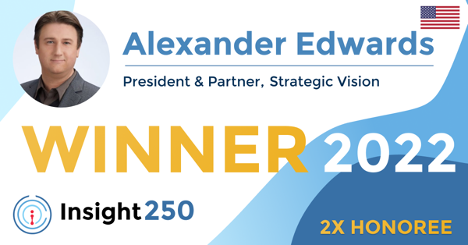
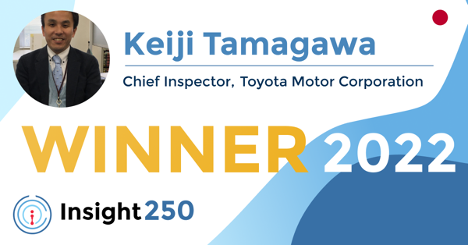
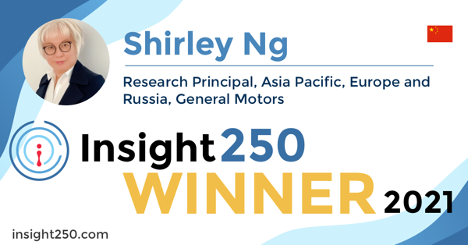
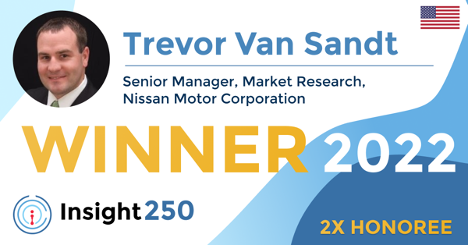
Crispin Beale
Chairman at QuMind, CEO at Insight250, Senior Strategic Advisor at mTab, CEO at IDXCrispin Beale is a marketing, data and customer experience expert. Crispin spent over a decade on the Executive Management Board of Chime Communications as Group CEO of leading brands such as Opinion Leader, Brand Democracy, Facts International and Watermelon. Prior to this Crispin held senior marketing and insight roles at BT, Royal Mail Group and Dixons. Crispin originally qualified as a chartered accountant and moved into management consultancy with Coopers & Lybrand (PwC). Crispin has been a Board Director (and Chairman) of the MRS for nearly 20 years and UK ESOMAR Representative for c15 years. As well as being CEO of Insight250, Crispin is currently Worldwide CEO of Digital Communications Solution Agency, IDX. Crispin is also the Senior Strategic Advisor at mTab and the Chairman of QuMind and spent 4 years as Group President of Behaviorally where he was responsibile for the client & commercial teams globally. Crispin is a passionate advocate for blending human intelligence and technology to deliver innovation and leadership across organisations.
